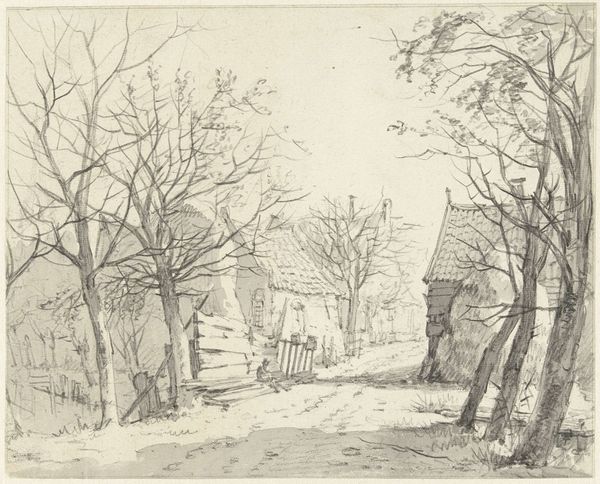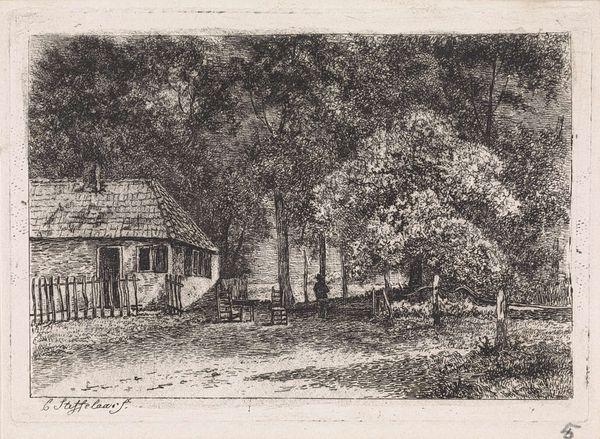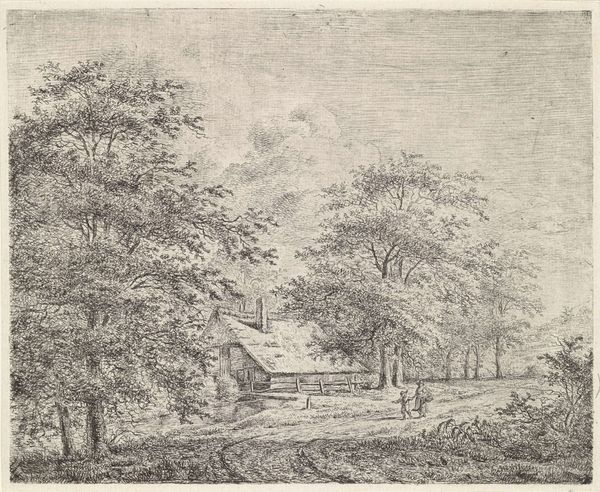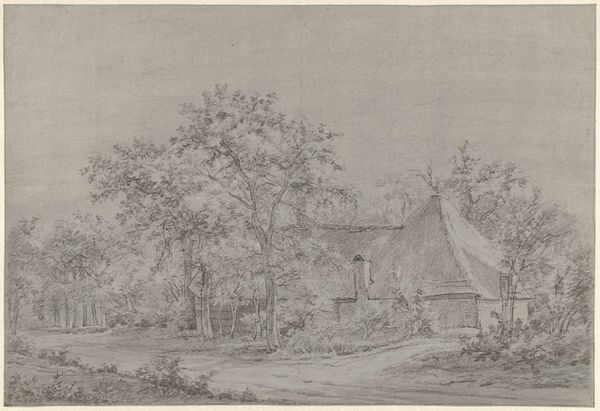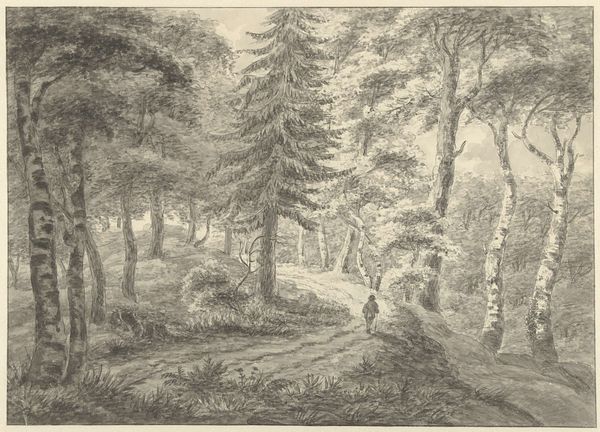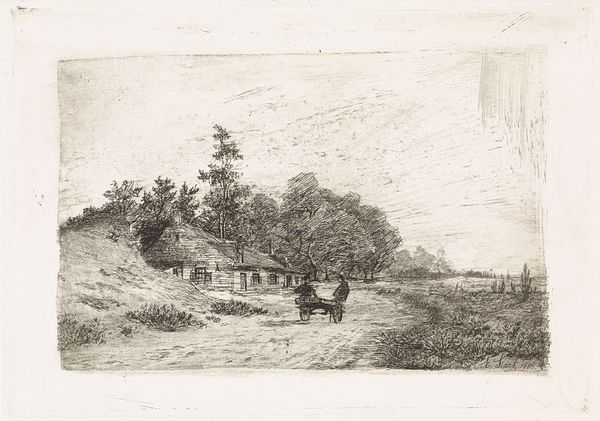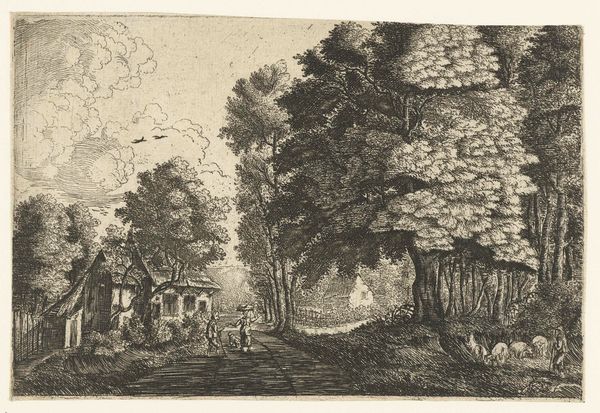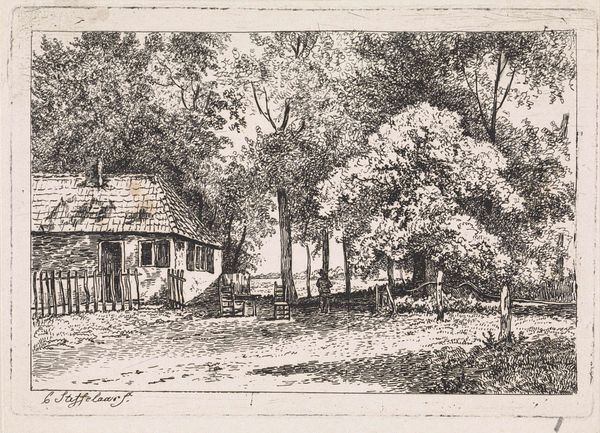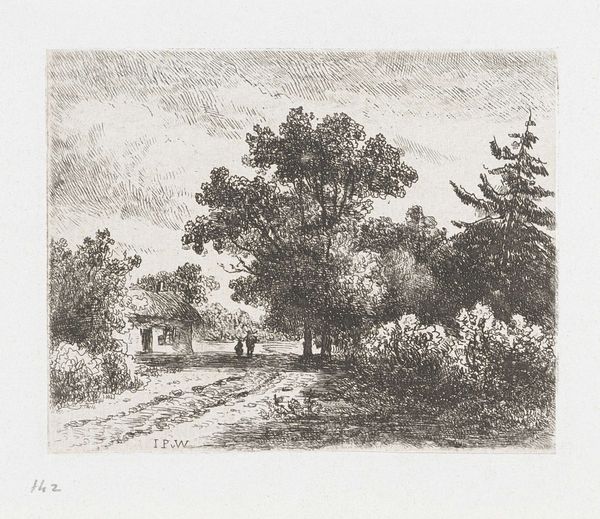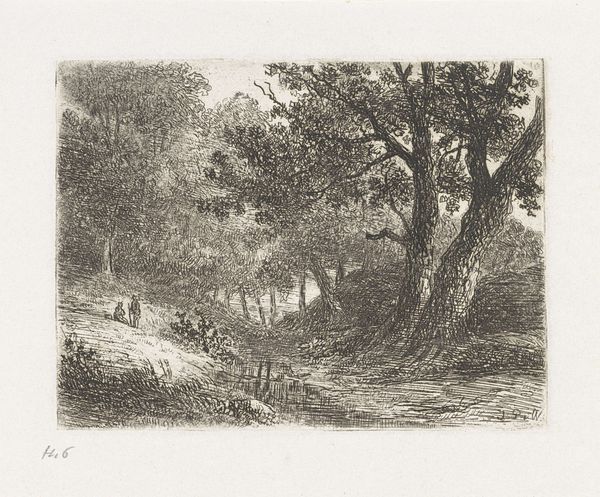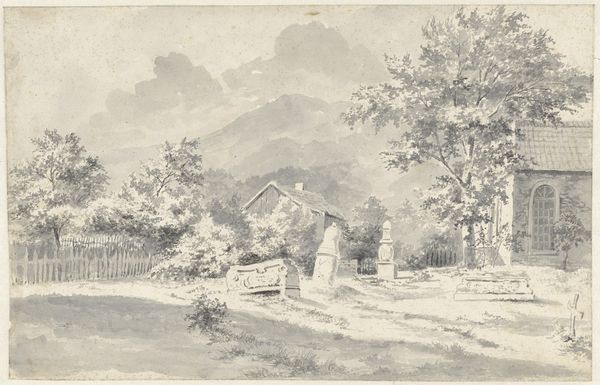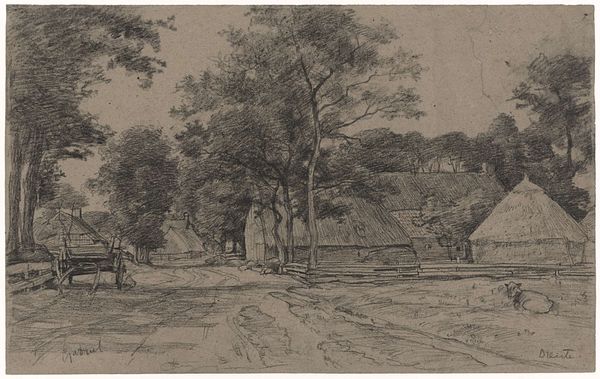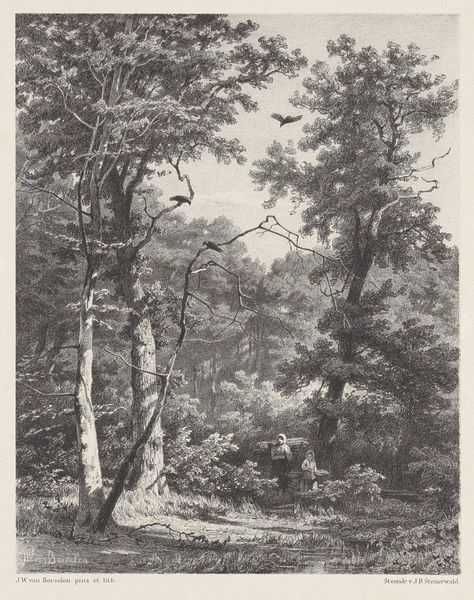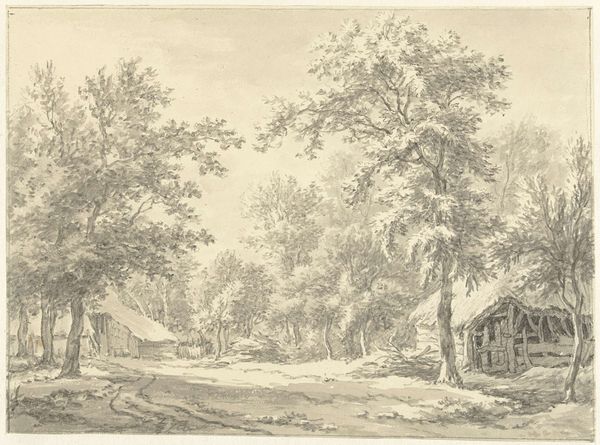
drawing, pencil
#
drawing
#
landscape
#
pencil drawing
#
romanticism
#
pencil
#
genre-painting
Dimensions: height 166 mm, width 260 mm
Copyright: Rijks Museum: Open Domain
Editor: So, here we have Frans Breuhaus de Groot’s “Laan tussen bomen met ruiter en vrouw,” or “Lane Between Trees with Rider and Woman,” a pencil drawing from the 19th century. It feels very…dreamlike, almost a snapshot from a fairytale. What do you see in this piece? Curator: This drawing really speaks to the Romantic era’s fascination with nature and its intersection with social structures. The path itself isn’t just a physical space, is it? It suggests movement, transition, perhaps even social mobility, while the figures on horseback could allude to class distinctions and gender roles. Editor: Gender roles, how so? Curator: Consider the relationship implied between the mounted rider, presumed to be male, and the woman who is on foot. This composition raises questions about power dynamics, and whether this scene subtly reinforces the era's hierarchical social norms. It's a seemingly idyllic image, but it can also be read as commentary on social inequality. What do you make of the light? Editor: It's so diffuse; the scene looks bathed in a kind of melancholic glow, obscuring details. Is that a conscious decision, a kind of "artistic license?" Curator: Exactly! That light could represent the way dominant narratives often obscure the experiences of marginalized individuals. It invites us to consider whose stories are visible and whose are cast in shadow within this landscape, both literally and figuratively. Editor: I hadn’t considered that, but it makes me see the drawing in a new, much more critical light. Curator: Precisely! By engaging with these artworks critically, we confront these questions and promote a deeper understanding of how art can both reflect and challenge the world around us.
Comments
No comments
Be the first to comment and join the conversation on the ultimate creative platform.
